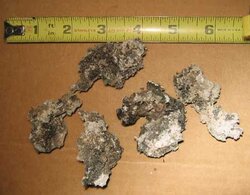No, I am saying that how a grated stove is operated could play a big part in the formation of clinkers. And "overfiring" doesn't mean the whole stove is aglow. The F3 in particular has a startup air control that is supposed to be closed in normal operation. If left open, it will certainly cause excessively high temps at the coals bed and could easily cause clinkers.got wood? said:ok...I buy that...except the overfiring part. You are saying this should not be happening if the stove were not overfiring?
Quite the opposite. I said I've ONLY seen them in my grateless stoves, and only in the front of the firebox, where the hot coals get the most air.When you burn your grate-less stove `optimally' you never see these?
What stoves are you burning?I make a good effort to not overfire my stoves but I do get these clinkers every week or so.
Basically yes, but I've seen various colors and consistencies...Are your clinkers brownish and look a bit like particle board?


